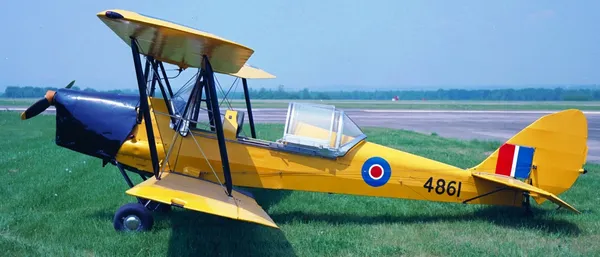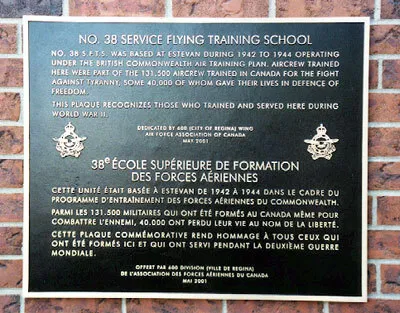Boiston, John Rochester (Pilot Officer)
Killed in Flying Accident 1942-July-29


Birth Date: 1920-March-22
Born:
Parents: Son of Lieut.-Comdr. William R. Boiston, R.N., and Edith Boiston of Gillingham, Kent, England.
Spouse:
Home:
Enlistment:
Enlistment Date: unkown date
Service
RAFVR
Unit
38 SFTS- Service Flying Training School (RAF)
Base
RCAF Stn. Estevan, Saskatchewan
Rank
Pilot Officer
Position
Service Numbers
129507
Crew or Other Personnel
Moth, Menasco 4873
Moth, Menasco serial: 4873

de Havilland DH 82C2 Menasco Moth Mk. I (Serial No. 4861),
preserved with the Canada Air and Space Museum, Ottawa, Ontario.
In the event that U-boat attacks caused a break in supply of British-made engines to Canada, American-built Menasco engines were installed in some Canadian-built Tiger Moths. This is the major difference between the Menasco and de Havilland Tiger Moths. Because this engine could drive a large generator, most Menasco Moths were used for radio training.
The Menasco engine was not as powerful as the Gypsy engine, resulting in a somewhat reduced performance. This loss of power made the Menasco Moth a less than ideal pilot-training airplane and contributed to the Menasco Moth being used almost exclusively for radio training.
Aircraft Images
Moth, Menasco 4873
Moth, Menasco II 4873
Category A crash at 11:00 AM on 29 July 1942 while with No. 38 Service Flying Training School at Estevan, Saskatchewan. Crashed 3 miles west of aerodrome, destroyed by post impact fire. Two fatalities, this was one of two fatal accidents with this school on the same day, see also 8528.1941-04-01 Taken on Strength 2019-08-20
1941-July-12 Accident: 3 Wireless School Loc: Stoney Mountain Names: Gyles | Heard
1942-July-29 Accident: 38 Service Flying Training School Loc: Aerodrome Names: Boiston | Cant
1942-09-10 Struck off Strength 2019-08-20
Unit Desciption
38 SFTS (38 Service Flying Training School)
Graduates of the EFTS "learn-to-fly" program went on a Service Flying Training School (SFTS) for 16 weeks. For the first 8 weeks the trainee was part of an intermediate training squadron; for the next 6 weeks an advanced training squadron and for the final 2 weeks training was conducted at a Bombing & Gunnery School. The Service schools were military establishments run by the RCAF or the RAF.
There were two different types of Service Flying Training Schools. Trainees in the fighter pilot stream went to an SFTS like No. 14 Aylmer, where they trained in the North American Harvard or North American Yale. Trainees in the bomber, coastal or transport pilot stream went to an SFTS like No. 5 Brantford where they learned multi-engine technique in an Airspeed Oxford, Avro Anson or Cessna Crane.

For more information on RCAF Station Estevan see here
RCAF.Info - RCAF Station Estevan SK
RCAF.Info - Relief Landing Field Outram SK
RCAF.Info - Relief Landing Field Chandler SK
![]() Saskatchewan Virtual War Memorial - 11 SFTS Yorkton History
Saskatchewan Virtual War Memorial - 11 SFTS Yorkton History
![]() Vintage Wings - Ghosts Of Saskatchewan
Vintage Wings - Ghosts Of Saskatchewan